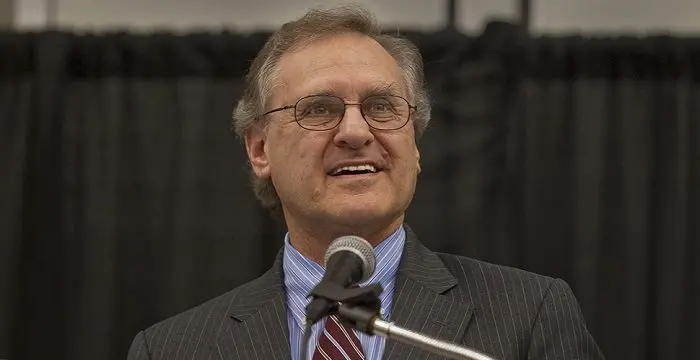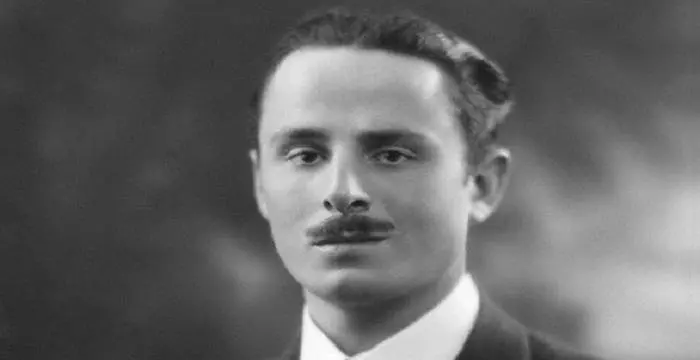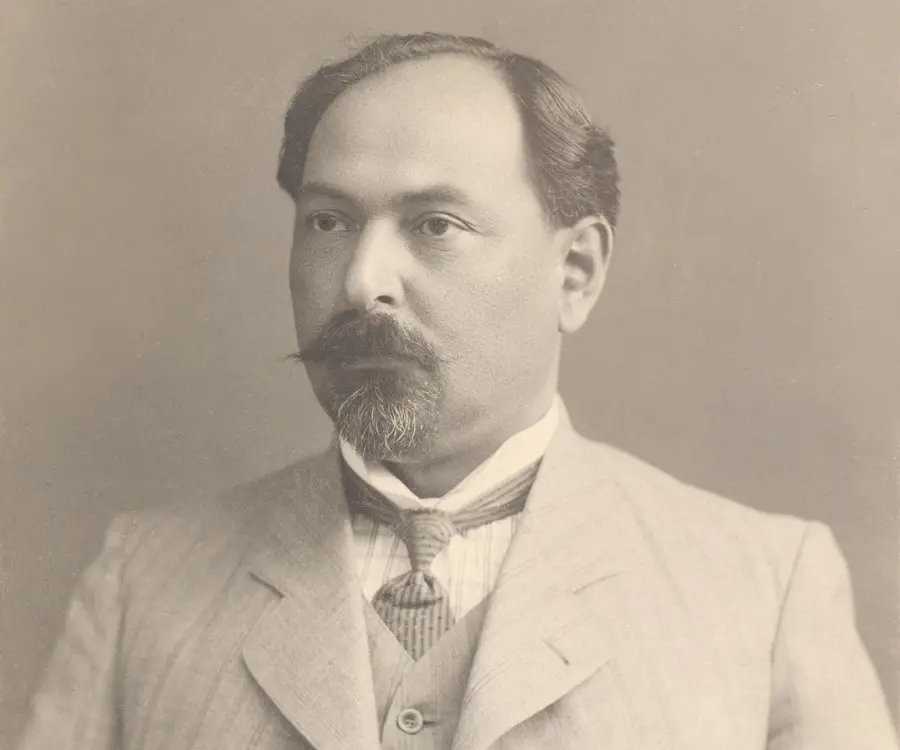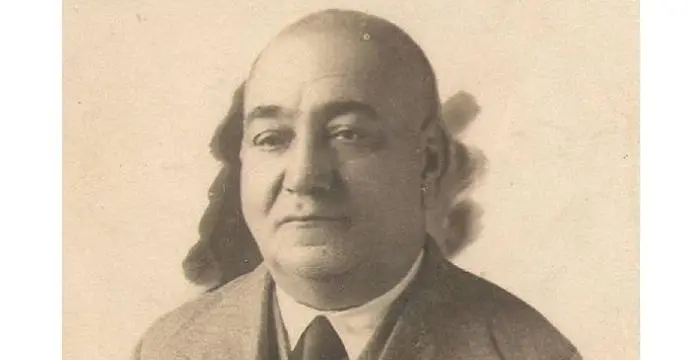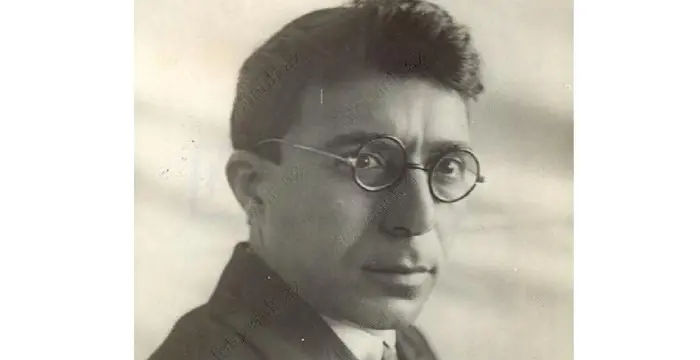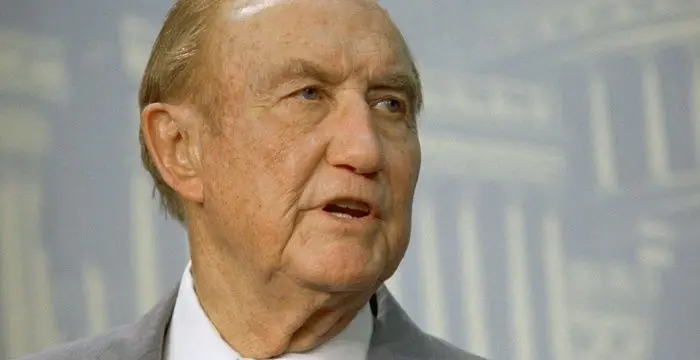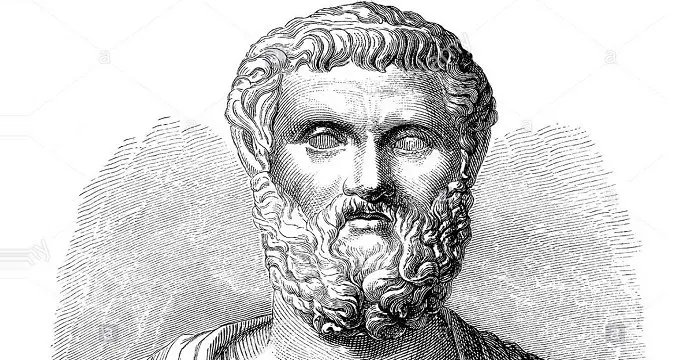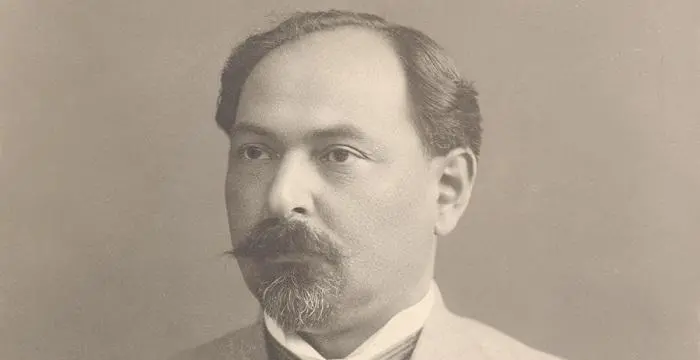
Nariman Narimanov - Azerbaijani Men, Family and Childhood
Nariman Narimanov's Personal Details
Nariman Narimanov was an early 20th century Azerbaijani revolutionary, politician and writer
| Information | Detail |
|---|---|
| Birthday | April 2, 1870 |
| Died on | March 19, 1925 |
| Nationality | Azerbaijani |
| Famous | Leaders, Political Leaders, Azerbaijani Men, Politician |
| Universities |
|
| Birth Place | Tbilisi |
| Religion | Islam, Atheism, Shia Islam |
| Gender | Male |
| Sun Sign | Aries |
| Born in | Tbilisi |
| Famous as | Politician |
| Died at Age | 54 |
// Famous Politician
Sebastian Coe
Sebastian Coe is a British former track and field athlete turned politician. This biography of Sebastian Coe provides detailed information about his childhood, life, achievements, works & timeline.
Stephen Lewis
Stephen Lewis is a Canadian politician, broadcaster, diplomat and professor. This biography profiles his childhood, career, works, life, achievements and timeline.
Oswald Mosley
Sir Oswald Ernald Mosley was a British politician known for his pro-fascist beliefs. This biography profiles his childhood, family, personal life, opinions, career, etc.
Nariman Narimanov's photo
Who is Nariman Narimanov?
Nariman Narimanov was an early 20th century Azerbaijani revolutionary, politician and writer. In his younger years, he worked as a medical practitioner and published the popular Azerbaijani revolutionary novel ‘Bahadur and Sona’. While studying medicine, he took part in the Revolution of 1905-1907 and become a prominent leader in a multitude of political parties. Even after being arrested and exiled from the country for five years, he continued to work for the Azerbaijani Communist Party. In 1920, he became a chair member the Soviet of People’s Commissars which ultimately led to the overthrow of the Russian control of Azerbijan. Thereafter, he became the head of Soviet Azerbijan. At the height of his political career, he was the main opponent of Sergo Ordzhonikidze, a student of Joseph Stalin, who wanted to merge the republics of Azerbaijan, Armenia and Georgia into the Transcaucasian Federation
// Famous Azerbaijani Men
Azim Azimzade
Azim Azimzade was a renowned Azerbaijani cartoonist and self-taught caricaturist. This biography profiles his childhood, life, career, achievements and timeline
Ahmad Javad
Ahmad Javad was an Azerbaijani poet in the early twentieth century. This biography profiles his childhood, life, achievements and timeline
Jafar Jabbarly
Azerbaijani-born Jafar Jabbarly was a renowned director, screenwriter, and playwright. This biography profiles his childhood, life, career, achievements and timeline
Childhood & Early Life
Narimanov was born on April 2, 1870 in the city of Tiflis, Georgia (then part of the Russian empire), into a middle class merchant family of Azerbaijani descent.
In 1890, he graduated from secondary school at the Transcaucasian Teachers Seminary in Gori, Georgia.
While working as a teacher in the Tiflis province of Gizel-Adjal in 1895, he was an active novelist, translator and playwright. He translated Nikolia Gogol’s satirical play ‘The Government Inspector’ into Turkish.
His most well-known self-written works were the 1896 novel ‘Bahadur and Sona’ and the 1899 historical trilogy ‘Nadir-shah’ along with a number of short stories.
From 1902 to 1908, he studied medicine at the Novorossiysk University in Krasnodar Krai.
In 1908, he graduated from Odessa University in the Ukraine where he studied medicine.
Career
In 1905, while practicing medicine, Narimanov joined the Russian Social Democratic Labour Party, known as the Bolshevik party, and got involved in the Revolution of 1905.
He eventually became the leader of the Isheyun-Asheyun, a Persian socialist democratic party for which he was arrested and sent to five years of exile in 1909.
Despite his arrest and exile, he continued to organize the Azerbaijan Communist Party until 1913.
After the Great October Socialist Revolution in 1917, he was elected chairman of the Hummet, the Azerbaijani Social Democratic Political Party, which would eventually become the Communist Party of Azerbaijan.
In 1918, the Baku Soviet party appointed him the People’s Commissar of National Economy.
When the Baku Soviet regime fell in 1918, he escaped from the city and became the People’s Commissariat of Foreign Affairs for Soviet Russia.
Later, he was appointed the Deputy People’s Commissar in the Commissariat of National Affairs.
In April 1923, he was elected a candidate to the Central Committee of RKP, the Russian Communist Party of Bolsheviks. After disagreeing with Joseph Stalin’s supporter Sergo Ordzhonikidze, he was placed in a position of little importance in Moscow under the guise of a promotion. There, he was put in charge of relations between Iran and Afghanistan.
Major Works
In 1920, he became the chairman of the Azerbaijani Revolutionary Committee, eventually becoming the Chairman of the Council of People’s Commissars’ of the Azerbaijani Soviet Republic
From May 1920 to May 1921, he served as head of the Soviet Azerbaijani government.
In 1922, he attended the Genoese Conference as a Soviet delegate. The same year, he was elected as chairman of the Union Council of Transcaucasian Federation, a republic including Azerbaijan, Georgia and Armenia.
On December 30, 1922, he was elected by the Central Executive Committee as chairman for the USSR, a position he held until March 19, 1925.
Personal Life & Legacy
He was married to Gulsum.
Narimanov suffered a heart attack and died on March 19, 1925, leaving behind his wife Gulsum and young son, Najaf.
His ashes were interned at the Kremlin Wall Necropolis in Moscow. The Russian Government declared three days of mourning, and thousands of people attended his funeral.
In 1938, his son Najaf joined the red army and studied at the Kiev Higher Military Radio Technical Engineering School until 1940. He was killed while serving as Tank Division Commander during the Eastern Front battles (World War II).
During the Soviet political turmoil in the 1930s, known as The Great Purge, Narimanov was denounced along with his fellow Hummet nationalists. After the death of Joseph Stalin in 1953, his legacy was revived and celebrated.
Azerbaijanis have honored him with monuments in Sumgayit, Baku and Ganja along with a street at the Azerbaijan Medical University in Baku. He has a monument in Georgia as well.
Narimanov’s monument in Baku is one of the few political statues left standing after the collapse of the Soviet Union in 1991, since he is seen by the people as a true supporter of Azerbaijan.
Trivia
Before getting involved in politics, Narimanov helped build Gizel-Adjal’s first public library.
Revolutionary Leon Trotsky referred to his death as the ‘second biggest loss for the Eastern World’.
// Famous Leaders
Edi Rama
Edi Rama is the current Prime Minister of Albania. Check out this biography to know about his childhood, life, achievements, works & timeline.
Tecumseh
Tecumseh was a Native American leader of the Shawnee clan. This biography profiles his childhood, life and timeline.
Khalifa bin Zayed Al Nahyan
Sheikh Khalifa bin Zayed Al Nahyan is the current President of the United Arab Emirates (UAE). Check out this biography to know about his birthday, childhood, family life, achievements and fun facts about him.
Nariman Narimanov biography timelines
- // 2nd Apr 1870Narimanov was born on April 2, 1870 in the city of Tiflis, Georgia (then part of the Russian empire), into a middle class merchant family of Azerbaijani descent.
- // 1890In 1890, he graduated from secondary school at the Transcaucasian Teachers Seminary in Gori, Georgia.
- // 1895While working as a teacher in the Tiflis province of Gizel-Adjal in 1895, he was an active novelist, translator and playwright. He translated Nikolia Gogol’s satirical play ‘The Government Inspector’ into Turkish.
- // 1896 To 1899His most well-known self-written works were the 1896 novel ‘Bahadur and Sona’ and the 1899 historical trilogy ‘Nadir-shah’ along with a number of short stories.
- // 1902 To 1908From 1902 to 1908, he studied medicine at the Novorossiysk University in Krasnodar Krai.
- // 1905In 1905, while practicing medicine, Narimanov joined the Russian Social Democratic Labour Party, known as the Bolshevik party, and got involved in the Revolution of 1905.
- // 1908In 1908, he graduated from Odessa University in the Ukraine where he studied medicine.
- // 1909He eventually became the leader of the Isheyun-Asheyun, a Persian socialist democratic party for which he was arrested and sent to five years of exile in 1909.
- // 1913Despite his arrest and exile, he continued to organize the Azerbaijan Communist Party until 1913.
- // 1917After the Great October Socialist Revolution in 1917, he was elected chairman of the Hummet, the Azerbaijani Social Democratic Political Party, which would eventually become the Communist Party of Azerbaijan.
- // 1918In 1918, the Baku Soviet party appointed him the People’s Commissar of National Economy.
- // 1918When the Baku Soviet regime fell in 1918, he escaped from the city and became the People’s Commissariat of Foreign Affairs for Soviet Russia.
- // 1920In 1920, he became the chairman of the Azerbaijani Revolutionary Committee, eventually becoming the Chairman of the Council of People’s Commissars’ of the Azerbaijani Soviet Republic
- // May 1920 To May 1921From May 1920 to May 1921, he served as head of the Soviet Azerbaijani government.
- // 1922In 1922, he attended the Genoese Conference as a Soviet delegate. The same year, he was elected as chairman of the Union Council of Transcaucasian Federation, a republic including Azerbaijan, Georgia and Armenia.
- // 30th Dec 1922 To 19th Mar 1925On December 30, 1922, he was elected by the Central Executive Committee as chairman for the USSR, a position he held until March 19, 1925.
- // Apr 1923In April 1923, he was elected a candidate to the Central Committee of RKP, the Russian Communist Party of Bolsheviks. After disagreeing with Joseph Stalin’s supporter Sergo Ordzhonikidze, he was placed in a position of little importance in Moscow under the guise of a promotion. There, he was put in charge of relations between Iran and Afghanistan.
- // 19th Mar 1925Narimanov suffered a heart attack and died on March 19, 1925, leaving behind his wife Gulsum and young son, Najaf.
- // 1938 To 1940In 1938, his son Najaf joined the red army and studied at the Kiev Higher Military Radio Technical Engineering School until 1940. He was killed while serving as Tank Division Commander during the Eastern Front battles (World War II).
- // 1953During the Soviet political turmoil in the 1930s, known as The Great Purge, Narimanov was denounced along with his fellow Hummet nationalists. After the death of Joseph Stalin in 1953, his legacy was revived and celebrated.
- // 1991Narimanov’s monument in Baku is one of the few political statues left standing after the collapse of the Soviet Union in 1991, since he is seen by the people as a true supporter of Azerbaijan.
// Famous Political Leaders
Edi Rama
Edi Rama is the current Prime Minister of Albania. Check out this biography to know about his childhood, life, achievements, works & timeline.
Khalifa bin Zayed Al Nahyan
Sheikh Khalifa bin Zayed Al Nahyan is the current President of the United Arab Emirates (UAE). Check out this biography to know about his birthday, childhood, family life, achievements and fun facts about him.
Leo Varadkar
Cam Leo Varadkar is the current Taoiseach—the Prime Minister—of the Republic of Ireland. Check out this biography to know about his childhood, family life, achievements and other facts about his life.
Strom Thurmond
Strom Thurmond was an American politician, who represented the state of South Carolina in the United States senate for 48 years.
Solon
Solon was an Athenian lawmaker, poet and politician. He is considered as one of the ‘Seven Wise Men’ in Greek culture. This biography provides detailed information about his childhood, life, career, works, achievements and timeline.
Mohammed bin Salman
Mohammed bin Salman is the Crown Prince of Saudi Arabia and the heir apparent to the throne. Check out this biography to know about his childhood, family life, achievements and other facts about him.
Nariman Narimanov's FAQ
What is Nariman Narimanov birthday?
Nariman Narimanov was born at 1870-04-02
When was Nariman Narimanov died?
Nariman Narimanov was died at 1925-03-19
Where was Nariman Narimanov died?
Nariman Narimanov was died in Moscow
Which age was Nariman Narimanov died?
Nariman Narimanov was died at age 54
Where is Nariman Narimanov's birth place?
Nariman Narimanov was born in Tbilisi
What is Nariman Narimanov nationalities?
Nariman Narimanov's nationalities is Azerbaijani
What was Nariman Narimanov universities?
Nariman Narimanov studied at Transcaucasian Teachers Seminary
What is Nariman Narimanov's religion?
Nariman Narimanov's religion is Islam, Atheism, Shia Islam
What is Nariman Narimanov's sun sign?
Nariman Narimanov is Aries
How famous is Nariman Narimanov?
Nariman Narimanov is famouse as Politician

